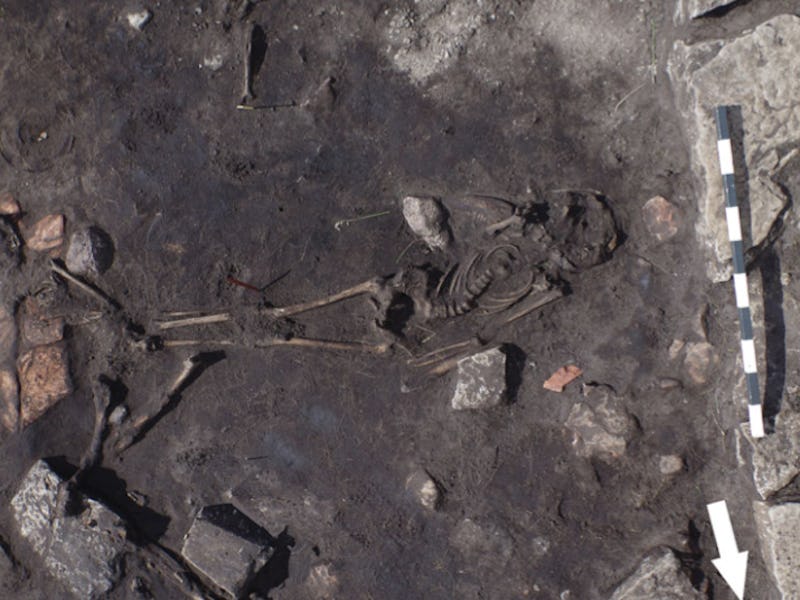Gruesome Ancient Massacre Site Paints a Horrific Picture of Human Violence
This is not your average village pillage.

It’s not entirely clear why a person would stuff a goat’s teeth into a dead man’s mouth. But for the fifth-century residents of Öland, an island off the coast of Sweden, the why probably wasn’t all that important. When you’re the victim of a brutal massacre, having a few extra chompers is the least of your worries.
In a study published last week in Antiquity, scientists from the Kalmar läns and Bohusläns Museums detailed their gruesome findings from Sandby borg, the site of a mass murder that likely occurred just before the turn of the sixth century. In precise, clinical language that reads more like a police report than an archaeological profile, the researchers describe the aftermath of an assault that ended with an entire community exterminated and a fortress abandoned. So far, the archaeological team has only excavated six percent of Sandby borg, but they’ve already discovered the remains of at least 26 different individuals.
“Perimortal interpersonal trauma has been identified on the skulls of at least four adults,” write the authors. “The skull of one young adolescent displays signs of blunt-force perimortem trauma.” In other words, they were bashed on the noggin. Other bodies were found partially charred, with injuries suggesting a swift assault on a mostly defenseless population. No weapons have been found on the site, although it’s possible they were simply taken by the attacking party.
When the dig began in 2010, the researchers weren’t sure what they would find. They started excavating the site after learning treasure hunters had taken interest in Sandby borg, a tip that something valuable was awaiting discovery. Since its apparent abandonment more than 1,500 years ago, the site has been largely untouched, perhaps because of long-standing superstitions surrounding Sandby borg.
“I do find it most likely that the event was remembered and that it triggered strong taboos connected to the site, possibly brought on through oral history for centuries,” archaeologist Ludwig Papmehl-Dufay told The Guardian on April 25.
As they quickly found out, sometimes the rumors are true.
This adolescent skeleton was found in one of the excavated houses.
From an educational perspective, Sandby borg is a valuable resource because it was preserved like a crime scene. “The site provides a snapshot of the moment of both the massacre and everyday life that was halted brutally,” the authors write. The archaeologists stumbled upon a case study of human violence and a window into pastoral life in fifth-century Sweden.
While the motive for the massacre is opaque, it’s clear this wasn’t your typical village pillage. A substantial amount of valuable goods were abandoned, including live animals that were presumably left to starve in the forsaken borg. With more of Sandby borg excavated, the researchers hope to unearth additional clues about political turmoil that could’ve precipitated the massacre.
As for the goat’s teeth in the mouth, archaeologists suspect it’s a perversion of a Roman tradition to insert coins in the mouth of a deceased warrior to give them a head start in the afterlife. In a historical context, it’s really not that strange — the complete degradation of human skulls has a long and glorious past.
The study highlights humanity’s violent history and our macabre fascination with ancient and contemporary human violence. We would like to think we are very different from the perpetrators of the Sandby borg massacre, but we sure like reading about them.